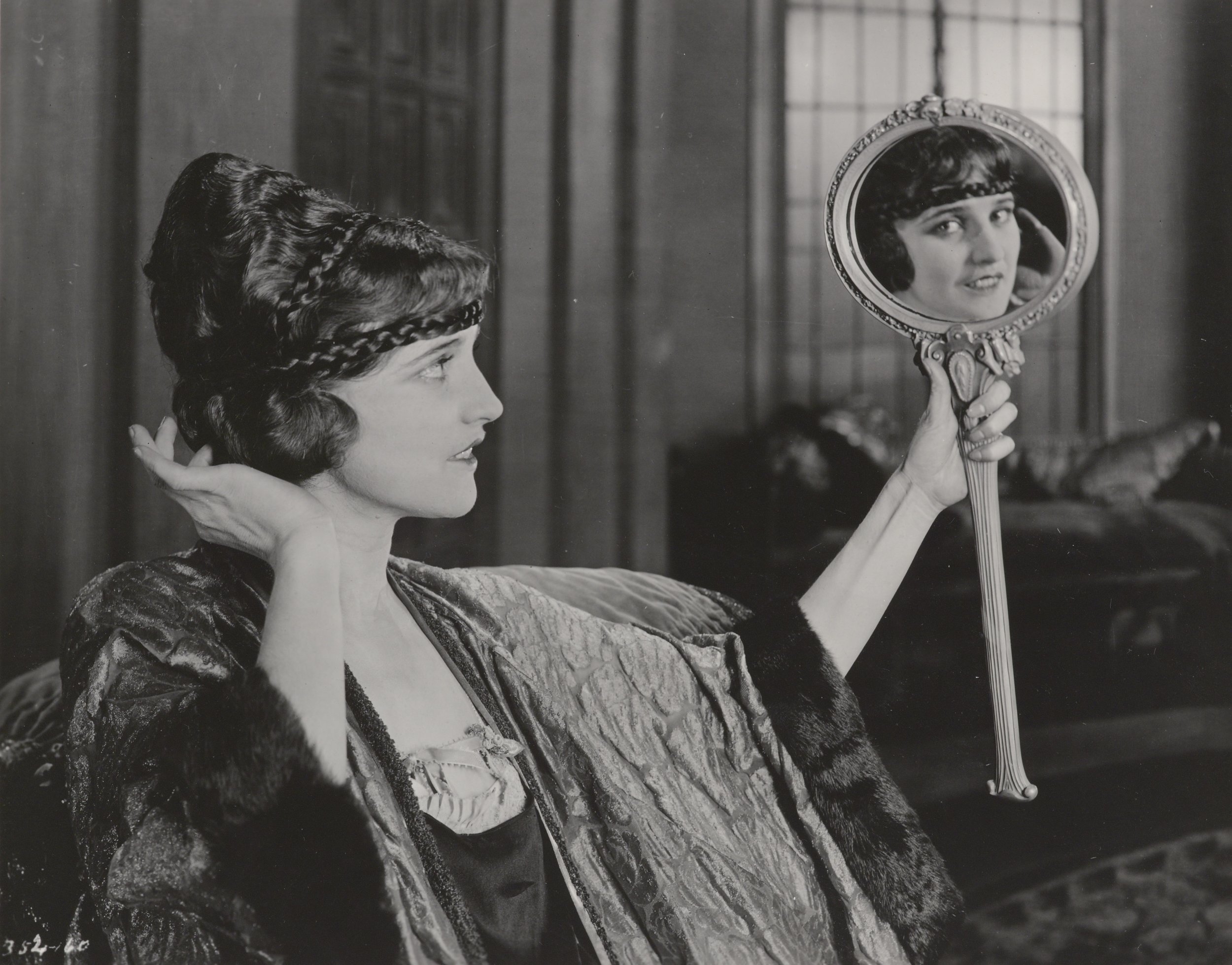Karl Struss: Moving Pictures | Amon Carter Museum
Karl Struss (1886-1981), Bebe Daniels, Male and Female (1919), gelatin silver print, Amon Carter Museum of American Art, Fort Worth, Texas, P1983.23.169
Written by Trip Avis
When thinking about Karl Struss and his role in both elevating the mystique and glossing the sepia-tinged sheen of Hollywood’s formative years, a phrase from Joni Mitchell’s song “Free Man in Paris” comes to mind: “Stoking the star maker machinery.” Utilizing his background in fine art photography, Struss made an auspicious foray into the filmmaking world during a key point in its historical journey and helped scaffold the mythos behind Tinseltown with his keen eye for a dramatic, lasting image. The iconic photographs featured in the Amon Carter Museum of American Art’s new retrospective exhibition, Karl Struss: Moving Pictures and the Rise of Hollywood, is a clear indicator of Struss’s lasting influence, treating us to early career moments with luminaries such as Gloria Swanson while pulling back the velvet curtain on the sets of silent films that helped put Hollywood on the map a near two hundred years ago.
Karl Struss (1886-1981), Agnes Ayres, Forbidden Fruit (1921), gelatin silver print, Amon Carter Museum of American Art, Fort Worth, Texas, P1983.23.641
There may be truth behind the belief that you can be in the right place at the right time. Jonathan Frembling, the Head Museum Archivist at the Carter, notes the parallel tracks of filmmaking and photography and Struss’s life path: “The trajectory of his career aligned almost perfectly with the technological innovations and cultural shifts that cultivated the advancement of fine art photography as well as the rise of cinematography as an art form, putting him in the unique position to break ground in both arenas.” While it is easy to note the symbiosis between Struss and developments in his industry, it would discount his talent to suggest that as the reason for his long and storied career. Simply put, the man knew how to take a good photograph.
Karl Struss (1886-1981), Gloria Swanson, Male and Female (1919), gelatin silver print, Amon Carter Museum of American Art, Fort Worth, Texas, P1983.23.171
Karl Struss both catered to and helped create that distinctive 1920s Hollywood aesthetic. Gloria Swanson, Male and Female (1919) features the starlet sprawled across the ground beneath the paws of a preying lion. The photograph has an austere theatricality that recalls baroque paintings; despite the black-and-white composition, chiaroscuro can be derived from the contrast between Swanson’s pearl-bedecked gown and feathered headdress and the dark ridges of the lion’s fur and the dank, dungeon-like stone walls. Actors and film sets were not the only ones to benefit from the gilding Struss treatment; cityscapes and bridges sprawl mysteriously before his camera, taking on a layered, humanistic depth. Struss’s image Brooklyn Bridge, Nocturne, ca. 1912-13, has a somber, gothic tone that rightfully earns the Washington Irving-coined sobriquet of “Gotham.” The bridge looms above the silhouettes of Manhattan buildings, spanning the length of the photograph. From Struss’s point of reference, the Brooklyn Bridge is at its most imposing and suggestive: it is a specter of engineering and technological change, a soot-tarnished tiara atop America’s most dynamic city.
Karl Struss (1886-1981), Brooklyn Bridge, Nocturne, ca. 1912-13, palladium print, Amon Carter Museum of American Art, Forth Worth, Texas, P1983.23.75, © 1983 Amon Carter Museum of American Art
Karl Struss may not be a household name for the layperson filmgoer, but he helped write the script. His impact is deeply embedded in our collective visual memory of the Golden Age of Hollywood, capturing the striking poses, ornate costuming, and dramatic flair. From stills to cinematography, Struss truly helped make pictures move.











